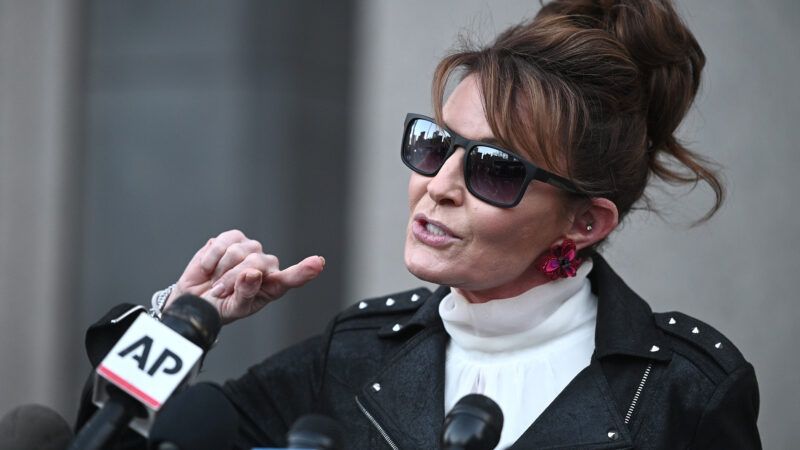Sarah Palin, Santa Claus Among 48 Candidates for Alaska's Open House Seat
The election serves as a trial run for Alaska's new voting process, which could be a boon for third-party candidates.

Alaska held a special election Saturday to fill the state's only seat in the House of Representatives. The office has been vacant since March, when Rep. Don Young passed away at age 88. Young, a Republican, had held the seat since 1973, less than 15 years after Alaska achieved statehood. While June 11 was the designated date of the election, the vote is being conducted primarily by mail. Ballots postmarked by that date will be accepted until June 21.
This is the first election since the state adopted entirely new voting rules in 2020. While the new methods themselves are not new, the particulars of Alaska's new system are novel, and could signal a creative way to shake up the two-party system.
Traditionally, each political party runs a primary to pick a candidate; then, each party's candidates compete in a general election in November. But Alaska now eschews party primaries, and all candidates run on a single ballot. Voters each choose a single candidate, and the top four candidates advance to the general election. (Since this is a special election, the final four will compete in August. The state will also hold its traditional primary the same day, before a general election in November.)
On Saturday's ballots, Alaskans chose from 48 candidates, some of them registered party members and others of "undeclared" party status. The most prominent is Sarah Palin, the former governor and 2008 Republican vice-presidential candidate. Despite not holding, or even seeking, elected office since resigning the governorship more than a decade ago, Palin had already advanced to the final ballot Sunday with 30 percent of the vote in an initial count.
Among the other candidates are Nick Begich III, member of a prominent Alaskan political family and the grandson of Don Young's immediate predecessor; and Santa Claus, a white-bearded, septuagenarian democratic socialist who legally changed his name in 2004 and serves on the city council of North Pole, Alaska. Begich is currently in second place and likely to advance. Claus is likely to be shunted back to North Pole, although ballots will still be received and counted until next week.
On the general election ballot, voters will select among the four final candidates using ranked choice voting (RCV), numbering them in order of preference. If a candidate receives a majority of votes as first choice, then that person wins outright. But if nobody receives a majority, then the lowest-performing candidate is eliminated, and every ballot with that candidate ranked first is recounted with its second choice as if it were the first. This continues until a majority winner is reached. Alaska is the second state to switch to RCV, although some states allow it in local races.
Ranked choice allows multiple candidates to run for a single seat but without having to go to the trouble of holding runoffs. It also broadens the bench beyond the traditional top two, as all candidates—including third-party candidates—compete on a level playing field. RCV allows voters to truly "vote their conscience," without worrying about whether their top choice will play spoiler.
Maine is the only state to have used RCV statewide, and there it has already shaken things up by electing a candidate who would otherwise have lost.
It seems extremely unlikely that any other candidate will be able to top Palin's name recognition (or, failing that, Begich's). But Alaska's unique new system could prove interesting, and useful, for less conventional candidates in the future.


Show Comments (59)